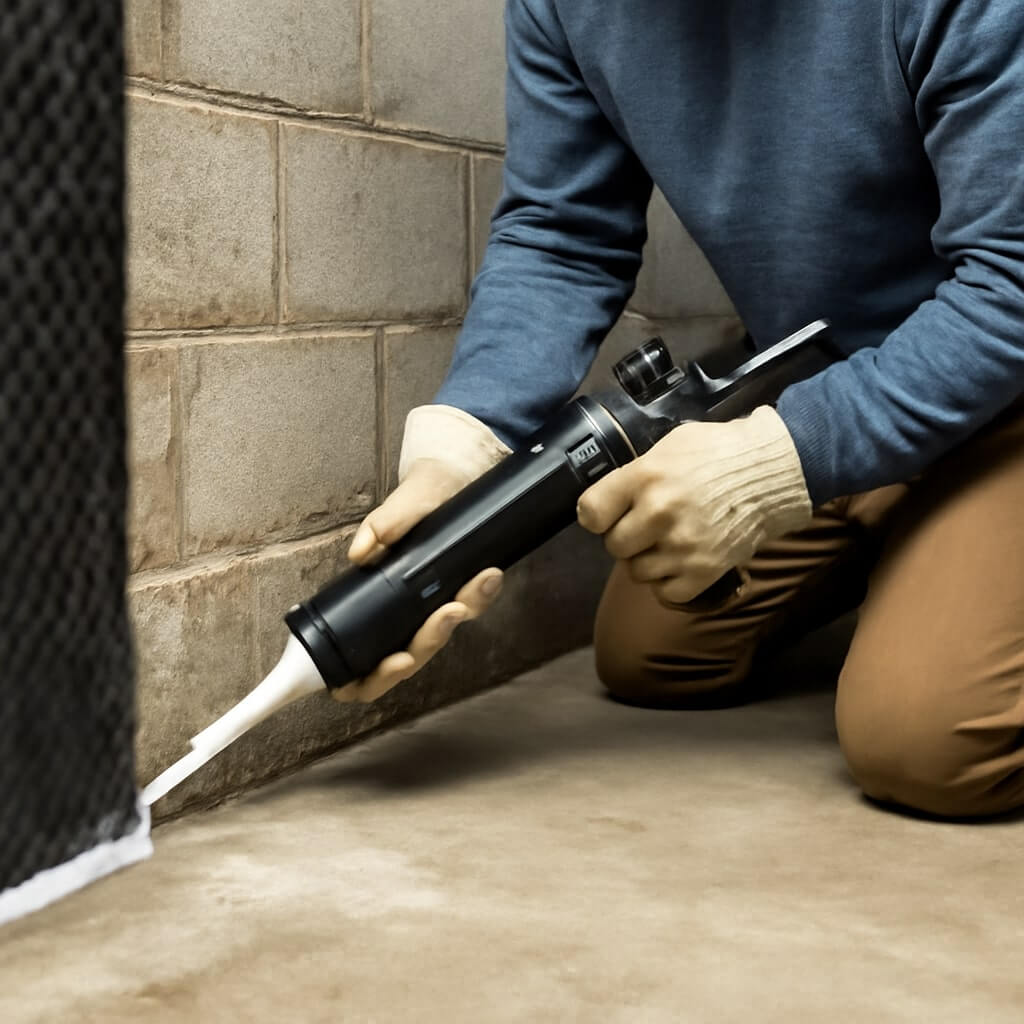When it comes to basement waterproofing, it’s essential to address any existing water issues before implementing solutions. Start by evaluating your basement for signs of moisture and damage. Once you’ve identified problem areas, you can move on to installing effective drainage systems and utilizing waterproofing products. These steps are critical for protecting your home from water intrusion. Let’s explore practical methods to guarantee your basement remains dry and secure for years to come.
Key Takeaways
- Inspect and seal foundation cracks to prevent water intrusion effectively.
- Install a sump pump and French drains to manage excess water during heavy rains.
- Apply waterproofing membranes on walls and floors for an effective moisture barrier.
- Maintain gutters and downspouts to direct water away from the foundation.
- Regularly check humidity levels and use dehumidifiers to control moisture in the basement.
Assess and Repair Existing Water Issues
Before you can effectively waterproof your basement, you need to assess and repair any existing water issues.
Start by identifying moisture sources, such as leaks from pipes or groundwater infiltration. Inspect your foundation for cracks, as these can allow water to seep in. Use a flashlight to check for damp spots or mold, which indicate problem areas.
Identify moisture sources and inspect for foundation cracks to prevent water seepage into your basement.
Seal any foundation cracks with an appropriate epoxy or hydraulic cement to prevent further water intrusion. Don’t overlook windows and doors; verify they’re properly sealed.
Addressing these issues will create a solid foundation for effective waterproofing, safeguarding your basement from future damage.
Install Proper Drainage Systems
Once you’ve addressed any existing water issues, the next step is to install proper drainage systems to manage water effectively.
Proper drainage installation is vital for preventing future problems. Here are three key components to take into account:
- French Drains: These systems redirect water away from your foundation, preventing pooling.
- Sump Pumps: A reliable sump pump will remove excess water from your basement, especially during heavy rain.
- Gutters and Downspouts: Make sure these are directed away from your home’s foundation to minimize water infiltration.
Utilize Waterproofing Products and Techniques
To effectively combat moisture intrusion, you should utilize a variety of waterproofing products and techniques that cater to your basement’s specific needs.
Start with waterproofing membranes, applying them to walls and floors to create a barrier against water infiltration. Guarantee proper sealant application around windows, doors, and any cracks to prevent leaks. Choose a high-quality, flexible sealant that can withstand temperature fluctuations.
Additionally, consider interior drainage systems that work in conjunction with these products for peak protection. Regularly inspect these areas to maintain their effectiveness, as proactive measures will help you keep your basement dry and free from mold.
Conclusion
By evaluating and repairing existing water issues, installing proper drainage systems, and utilizing effective waterproofing products, you can greatly enhance your basement’s resilience against moisture. Regular inspections and maintenance will help you spot potential problems early, ensuring your waterproofing efforts remain effective over time. With these steps, you’re not just protecting your basement; you’re safeguarding your entire home from costly water damage and mold growth. Stay proactive, and your basement will stay dry and secure for years to come.

